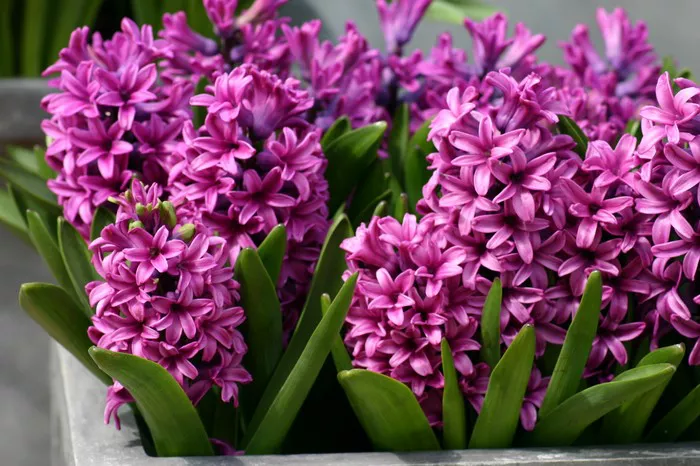Flowers have long been used as symbols to convey messages, emotions, and cultural significance. Among the plethora of blooms, hyacinth flowers stand out for their rich history and layered symbolism. From ancient mythology to modern-day interpretations, the hyacinth flower carries deep meaning that transcends its physical beauty. In this article, we delve into the intricate symbolism of hyacinth flowers, exploring their cultural, historical, and botanical significance.
Understanding the Symbolism of Hyacinth Flowers
The hyacinth flower, scientifically known as Hyacinthus orientalis, belongs to the Asparagaceae family and is native to the eastern Mediterranean region. Its delicate petals and captivating fragrance have made it a popular choice in gardens and floral arrangements. However, beyond its aesthetic appeal, the hyacinth holds symbolic importance across various cultures and contexts.
1. Mythological Significance
In Greek mythology, the hyacinth flower is associated with a tragic tale involving the god Apollo and a mortal youth named Hyacinthus. According to the myth, Apollo and Hyacinthus were close companions, but their bond was tested by the jealousy of the god of the west wind, Zephyrus. In a fit of envy, Zephyrus caused a discus thrown by Apollo to strike Hyacinthus, mortally wounding him. From the blood of the dying youth, Apollo caused the hyacinth flower to bloom, its petals inscribed with the lamentation “AI AI” – the Greek expression of grief.
This mythological narrative imbues the hyacinth flower with themes of love, loss, and the transient nature of life. It symbolizes both the fragility of existence and the enduring power of remembrance.
2. Cultural Symbolism
Across different cultures, hyacinth flowers hold varying symbolic meanings. In Persia, for instance, the hyacinth represents rebirth and the arrival of spring, making it a popular motif in traditional New Year celebrations (Nowruz). Its vibrant colors and sweet fragrance are believed to herald the renewal of life and the triumph of light over darkness.
Similarly, in Victorian England, where flowers were often used to convey sentiments that could not be expressed openly, the hyacinth carried nuanced meanings depending on its color. Blue hyacinths were associated with sincerity and constancy, making them a favored choice for declarations of love and fidelity. Pink hyacinths, on the other hand, symbolized playfulness and a sense of joy, while white hyacinths conveyed purity and innocence.
3. Botanical Characteristics
Beyond its symbolic connotations, the hyacinth flower also possesses distinctive botanical characteristics that contribute to its allure. The name “hyacinth” is derived from the Greek word “hyakinthos,” which is believed to have origins in the mythological figure of Hyacinthus. The flower typically grows in clusters, with each stem bearing numerous bell-shaped blooms arranged in a raceme.
Hyacinth flowers come in a range of colors, including shades of blue, purple, pink, white, and yellow. Their fragrance, often described as sweet and intoxicating, adds to their appeal, making them a popular choice for perfumes and essential oils.
4. Symbolism in Literature and Art
The symbolism of hyacinth flowers has permeated various forms of artistic expression, including literature, painting, and sculpture. In poetry, the hyacinth is often used as a metaphor for beauty, grace, and the fleeting nature of youth. Writers such as William Wordsworth and John Keats have immortalized the flower in their verses, invoking its symbolic resonance to evoke themes of mortality and transcendence.
Similarly, painters throughout history have depicted hyacinth flowers in their works, imbuing them with layers of meaning that reflect the cultural and aesthetic sensibilities of their time. From the delicate still lifes of the Dutch Golden Age to the romantic landscapes of the Impressionists, the hyacinth has been a recurrent motif, symbolizing the ephemerality of earthly pleasures and the quest for spiritual transcendence.
5. Contemporary Interpretations
In contemporary culture, the symbolism of hyacinth flowers continues to evolve, reflecting shifting attitudes towards nature, beauty, and the human condition. In the language of flowers, a Victorian-era practice of conveying messages through floral arrangements, the hyacinth is often used to express sentiments of deep admiration, affection, and sorrow.
Moreover, the hyacinth’s association with springtime and renewal aligns with modern notions of sustainability and environmental consciousness. As society grapples with pressing ecological challenges, the symbolism of the hyacinth serves as a poignant reminder of the interconnectedness of all living things and the need to cherish and protect the natural world.
Conclusion
The symbolism of hyacinth flowers is as multifaceted as the blooms themselves. From its mythological origins to its cultural significance and botanical attributes, the hyacinth encapsulates a rich tapestry of meanings that resonate across time and space. Whether adorning a garden, gracing a floral arrangement, or inspiring artistic endeavors, the hyacinth continues to captivate hearts and minds, inviting contemplation on the timeless themes of love, loss, and the cyclical nature of existence. As we gaze upon the delicate petals of this exquisite flower, we are reminded of the profound beauty and significance that permeate the natural world, inviting us to pause, reflect, and celebrate the wonder of life itself.

